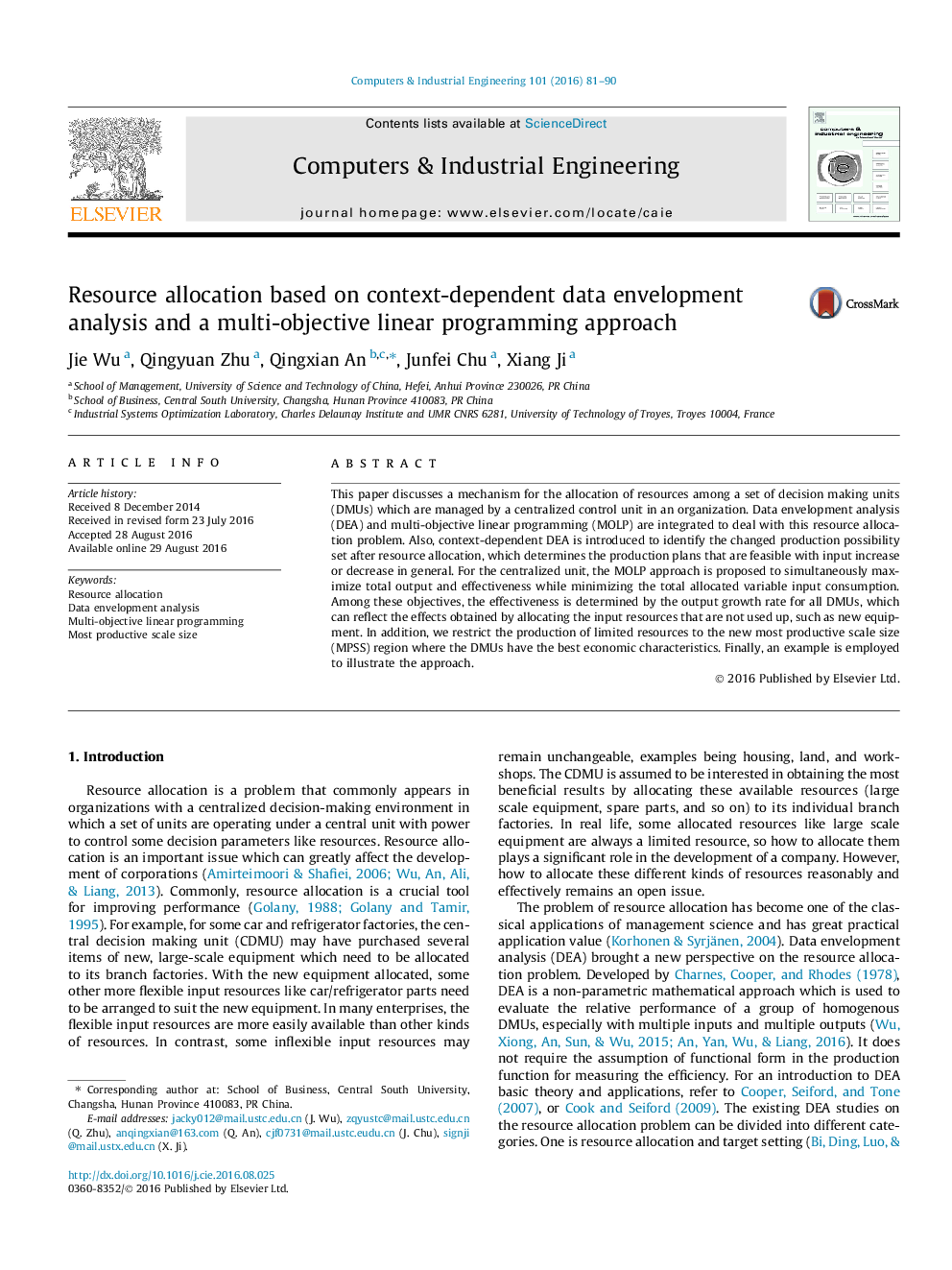| Article ID | Journal | Published Year | Pages | File Type |
|---|---|---|---|---|
| 5127877 | Computers & Industrial Engineering | 2016 | 10 Pages |
â¢DEA and MOLP are integrated to deal with the resource allocation problem.â¢The context-dependent DEA is used to characterize the production plans.â¢MOLP is proposed to maximize outputs, effectiveness and minimize input.â¢We restrict the best production in the new most productive scale size region.
This paper discusses a mechanism for the allocation of resources among a set of decision making units (DMUs) which are managed by a centralized control unit in an organization. Data envelopment analysis (DEA) and multi-objective linear programming (MOLP) are integrated to deal with this resource allocation problem. Also, context-dependent DEA is introduced to identify the changed production possibility set after resource allocation, which determines the production plans that are feasible with input increase or decrease in general. For the centralized unit, the MOLP approach is proposed to simultaneously maximize total output and effectiveness while minimizing the total allocated variable input consumption. Among these objectives, the effectiveness is determined by the output growth rate for all DMUs, which can reflect the effects obtained by allocating the input resources that are not used up, such as new equipment. In addition, we restrict the production of limited resources to the new most productive scale size (MPSS) region where the DMUs have the best economic characteristics. Finally, an example is employed to illustrate the approach.
